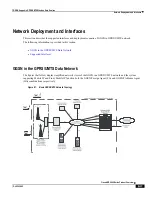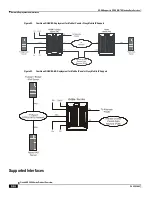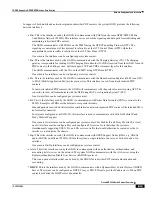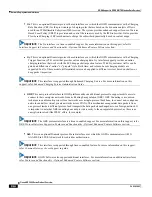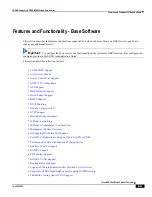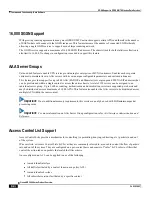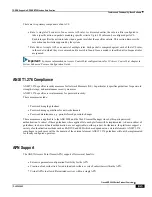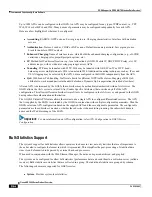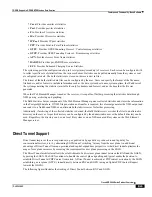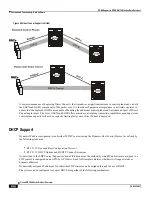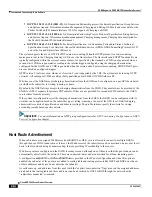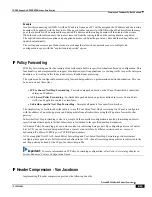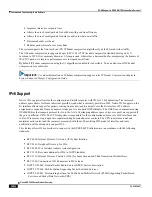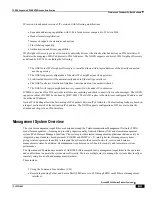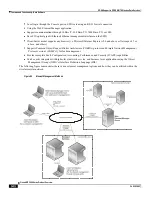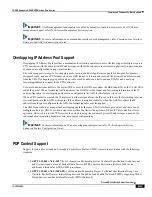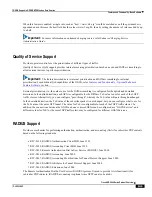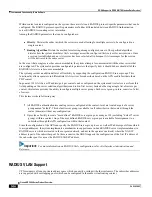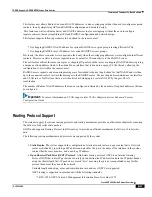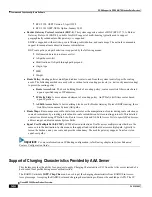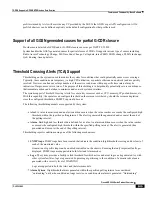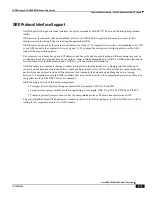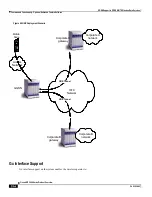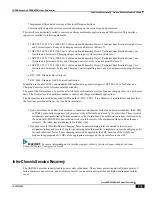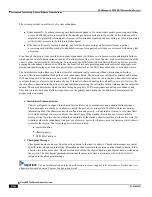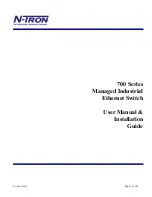
GGSN Support in GPRS/UMTS Wireless Data Services
Features and Functionality - Base Software ▀
Cisco ASR 5000 Series Product Overview ▄
OL-22938-02
IP version 6 is enhanced version of IP version 4 with following modifications:
Expanded addressing capabilities with 128 bit for address as compared to 32 bits in IPv4.
Header format simplification
Improved support of extensions and options
Flow labeling capability
Authentication and Privacy capabilities
IPv6 Neighbor Discovery protocol is used to dynamically discover the directly attached devices on IPv6 Interfaces. It
facilitates the mapping of MAC addresses to IPv6 Addresses. The GGSN supports a subset of IPv6 Neighbor Discovery
as defined by RFC 2461, including the following:
The GGSN uses IPv6 Neighbor Discovery to learn the Ethernet link-layer addresses of the directly connected
next-hop gateway.
The GGSN supports configuration of the static IPv6 neighbor (next-hop gateway).
Link-local addresses will be automatically added to Ethernet type interfaces.
The GGSN performs Unsolicited Neighbor Advertisement on line card switchover.
The GGSN will reply to neighbor discovery requests for the node's IPv6 addresses.
ICMPv6 is a protocol for IPv6 networks to allow error reporting and check connectivity via echo messages. The GGSN
supports a subset of ICMPv6 as defined by [RFC-4443]. The GGSN replies to the link-local, configured IP address, and
the all-hosts IP address.
Native IPv6 Routing allows the forwarding of IPv6 packets between IPv6 Networks. The forwarding lookup is based on
a longest prefix match of the destination IPv6 address. The GGSN supports configuration of IPv6 routes to directly
attached next hops via an IPv6 Interface.
Management System Overview
The system's management capabilities are designed around the Telecommunications Management Network (TMN)
model for management -- focusing on providing superior quality Network Element (NE) and element management
system (Web Element Manager) functions. The system provides element management applications that can easily be
integrated, using standards-based protocols (CORBA and SNMPv1, v2), into higher-level management systems --
giving wireless operators the ability to integrate the system into their overall network, service, and business
management systems. In addition, all management is performed out-of-band for security and to maintain system
performance.
The Operation and Maintenance module of ASR 5000 offers comprehensive management capabilities to the operators
and enables them to operate the system more efficiently. There are multiple ways to manage the system either locally or
remotely using its out-of-band management interfaces.
These include:
Using the Command Line Interface (CLI)
Remote login using Telnet, and Secure Shell (SSH) access to CLI through SPIO card's Ethernet management
interfaces
Summary of Contents for ASR 5000 Series
Page 1: ......
Page 26: ......
Page 48: ...New In Release 10 0 SCM Features Cisco ASR 5000 Series Product Overview OL 22938 02 ...
Page 50: ......
Page 58: ......
Page 68: ......
Page 126: ......
Page 138: ......
Page 146: ......
Page 218: ......
Page 236: ......
Page 356: ......
Page 374: ......
Page 422: ......
Page 496: ......
Page 572: ......
Page 654: ......
Page 700: ......
Page 726: ......
Page 784: ......
Page 816: ......
Page 844: ......
Page 906: ......
Page 926: ......
Page 942: ......
Page 943: ...Cisco ASR 5000 Series Product Overview OL 22938 02 Chapter 30 Technical Specifications ...
Page 966: ......
Page 972: ......

